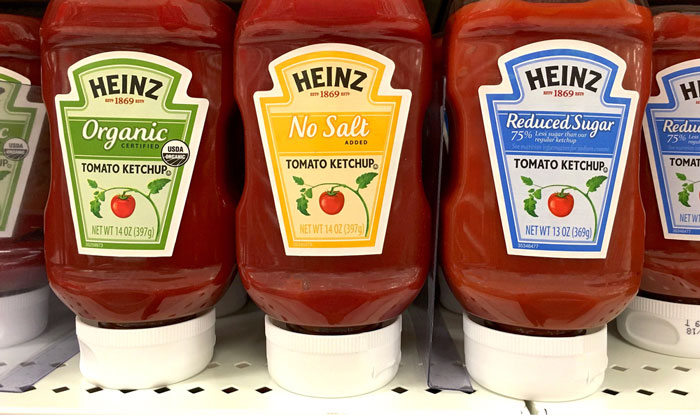Guidelines issued to help navigate the complexities of comparative nutrition
- Like
- Digg
- Del
- Tumblr
- VKontakte
- Buffer
- Love This
- Odnoklassniki
- Meneame
- Blogger
- Amazon
- Yahoo Mail
- Gmail
- AOL
- Newsvine
- HackerNews
- Evernote
- MySpace
- Mail.ru
- Viadeo
- Line
- Comments
- Yummly
- SMS
- Viber
- Telegram
- Subscribe
- Skype
- Facebook Messenger
- Kakao
- LiveJournal
- Yammer
- Edgar
- Fintel
- Mix
- Instapaper
- Copy Link
Posted: 22 January 2018 | George Smith (New Food) | No comments yet
A trade body representing the food and drink industry in the UK has issued guidance tailored to helping food manufacturers make sense of comparative nutrition claims.


COMPARATIVE NUTRITION: Many manufacturers offer reduced salt or sugar versions of their products
The UK Food and Drink Federation (FDF) has published a series of guidelines aimed at helping food manufacturers navigate the ‘complex area’ of comparative nutrition legislation.
The FDF issued its Guidance on Comparative Nutrition Claims today (January 22) for the first time. It provides detailed best practice guidance on the requirements and appropriate wording for comparative nutrition claims to be used in the labelling and advertising of food and drink products.
Comparative nutrition claims stipulate a difference in the quantity of a nutrient or energy value, such as increased or reduced nutrients, reduced calories, or use of the term ‘light’, when compared to products already available on the market.
The guidance also describes non-permitted claims, but does not cover non-nutrition comparative claims, such as ‘30 per cent more fruit’.
The industry guidance is aimed at helping manufacturers achieve compliance with this complex area of legislation by providing much-needed clarity on the substantiation of comparative nutrition claims, the FDF said.
The appropriate use of comparative nutrition claims can effectively communicate to consumers when a nutritional profile has been significantly improved as a result of reformulation. It can also serve to communicate a product’s nutritional position relative to the average profile of products available on the market.
Helen Munday, Chief Scientific Officer, Food and Drink Federation, said: “Comparative nutrition claims can help consumers make healthier choices. FDF’s new guidance goes much further than anything currently available in the area of comparative nutrition claims and aims to create a level playing field within the food industry.
“We are providing industry with the tools to use these claims in a compliant and consistent way, which can help to showcase ongoing reformulation work.”
Tim Baxter, Deputy Director – Healthy Behaviours, Department of Health, said: “This step by step guide by the Food and Drink Federation (FDF) offers a consistent approach to making comparative nutrition claims. Businesses may find this helpful when considering the requirements of the legislation and in providing accurate information on their product packaging.”
Related topics
Free From, Ingredients, Packaging & Labelling, Regulation & Legislation









